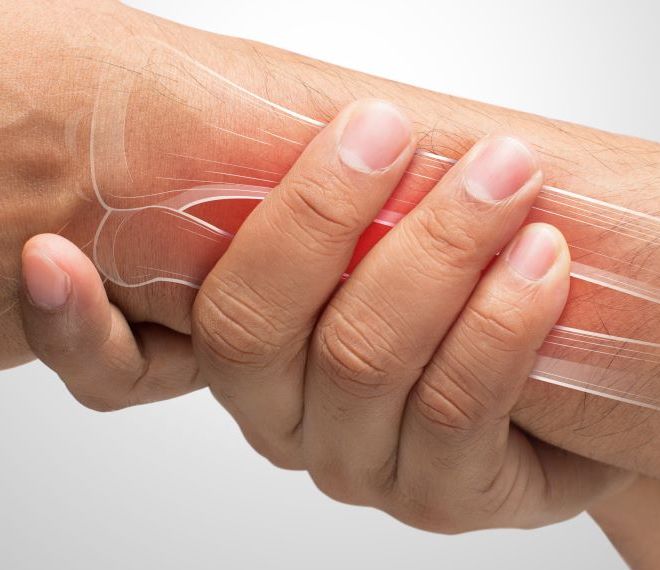Bone density test DEXA

Why does osteoporosis develop?
- Hereditary factors (70-80%)
- Lack of physical activity, smoking, excessive alcohol consumption, diet low in calcium and vitamins, low vitamin D intake
- Diseases and medicines (not exhaustive): steroids, hormonal diseases, diseases of the intestinal system and malabsorption, drugs that weaken the immune system, pathological thinness, anorexia, chronic kidney and liver failure, overproduction of thyroid hormones, long-term use of asthma and epilepsy drugs, etc.
For whom and when is osteoporosis screening recommended?
Based on the recommendation of the International Association of Bone Densitometry ( ISCD ), bone densitometry testing should only be performed in certain groups, as the test will have an influence on the patient's treatment, or support it. These groups are:
- Women from the age of 50 and after, especially in the case of osteoporosis and fractures occurring on the maternal side
- Women younger than 50 with postmenopausal symptoms
- Women with a high family history of the three main fracture types (forearm, vertebra, hip)
- All age groups with a high-risk underlying disease (diseased liver, kidney disease, type I diabetes, malabsorption disorders, bone disease of metabolic origin, thyroid disease, etc.)
- Men from 70 years of age and later, as well as in case of high-risk underlying disease or taking medications that cause osteoporosis
- Adult women with pathological fractures or a clinical background associated with a decrease in bone mass
- After prolonged bed rest or steroid treatment
- DEXA examination cannot be performed on pregnant women
At what intervals should the test be repeated?
Osteoporosis screening is recommended every 3 years in case of no complaints and average risk. For the patient, the clinician may prescribe a repeat DEXA examination for follow-up purposes, for example in the case of measuring the effectiveness of anti-osteoporosis drugs. This can usually be 12-18 months or 2 years, depending on the medications the patient is taking and how much bone mass has decreased. It is recommended that the patient go back to the place where the previous (baseline) examination took place, because in this way the data measured at the time and the new one can be compared, the changes can be evaluated, and the type of treatment can be changed or stopped.
What happens during the examination?
During the examination, the lumbar spine, hips on both sides and the entire body are examined in a supine position, there is no need to turn during the examination. The duration of the measurements is about 15-20 minutes.
Before starting the examination, it is advisable to remove the watch, jewelry, piercings, and in the case of ladies, the bra as well (a T-shirt or long-sleeved clothing remains). The patient is then given a single-use suit, his weight and height are measured and he fills out a detailed questionnaire (previous bone fractures, physical activity, smoking, alcohol consumption, medications, etc.).
It is important for the patient to lie still and breathe evenly.
Full body tissue composition examination
It is important to know that in the case of a full-body examination, we do not receive information about the density of the bones, but about the % distribution of fat tissue and connective tissue.
The special indications for total body composition measurement are as follows: in the case of HIV-positive patients, in overweight patients for whom surgical removal of adipose tissue is planned, in patients suffering from muscle weakness and in patients with poor physical functions, the measurement of total body tissue composition is clinically recommended.
How to request an examination?
At our clinic, we do not ask for a referral for the DEXA test, but it is advisable for the referring doctor to describe the history and clinical questions that led to the initiation of the bone densitometry test.
When will I receive a finding?
What are the risks and side effects?
The test involves a low dose of X-ray radiation. This dose corresponds approximately to the so-called natural background radiation found in open space. However, pregnancy is an absolute exclusion.
Some important things to know before a DEXA examination:
- Removal of metal objects, except metal prostheses, implants
- If someone had an x-ray/swallow or CT scan with contrast material a few days before the test, the oral contrast material used during the test (not the intravenous one) could potentially still remain in the intestines. This can cause a serious artifact during the measurement and make the test impossible. Therefore, it is advisable to postpone DEXA in such cases. In the case of older patients, this substance is present in the intestinal tract even longer, so it is recommended to wait at least two weeks.
- Comparison of DEXA findings from a previous institution is not possible, as the examination was not performed on the same machine and institution. Thus, it is not even expected to give the patient a comparative assessment.
